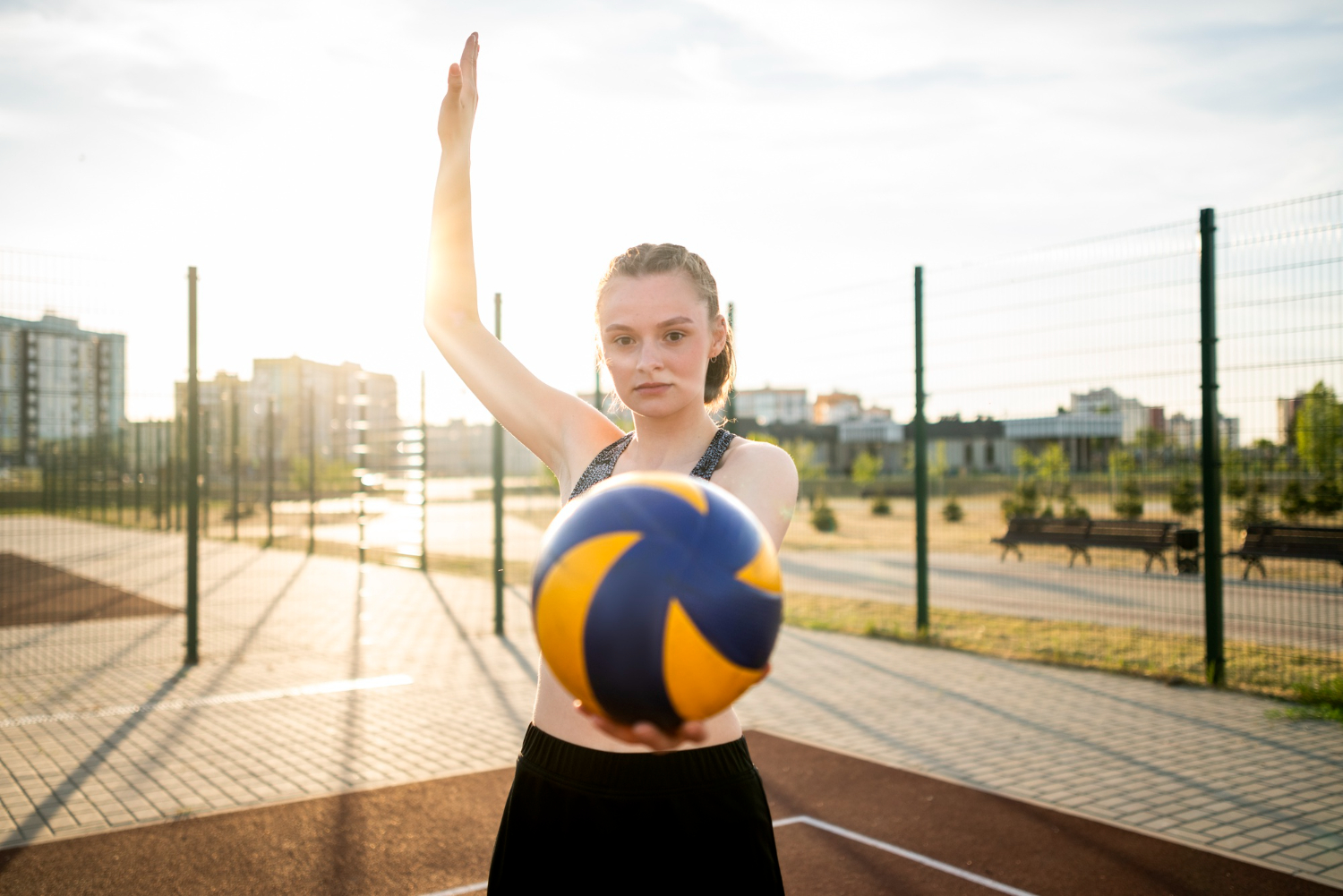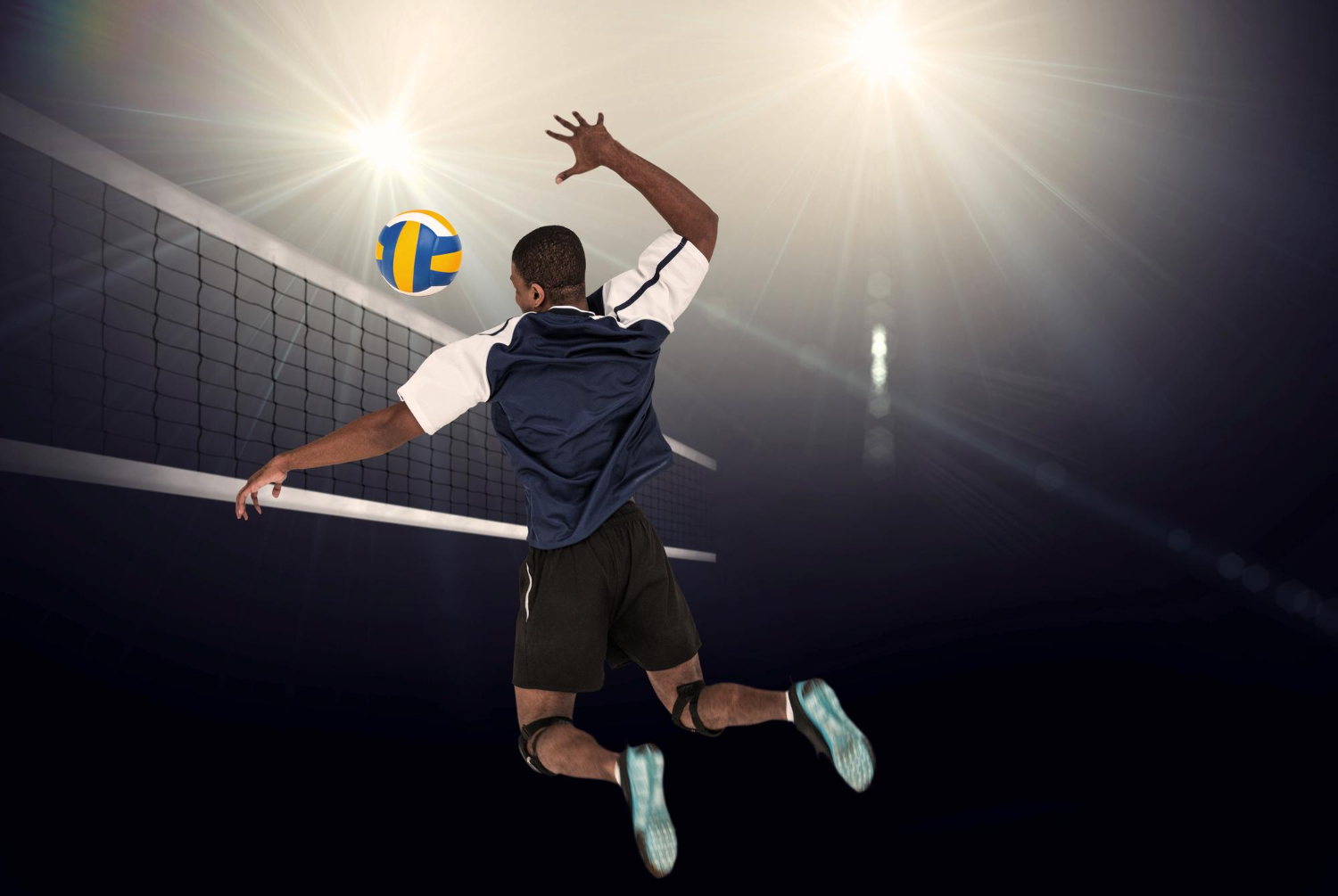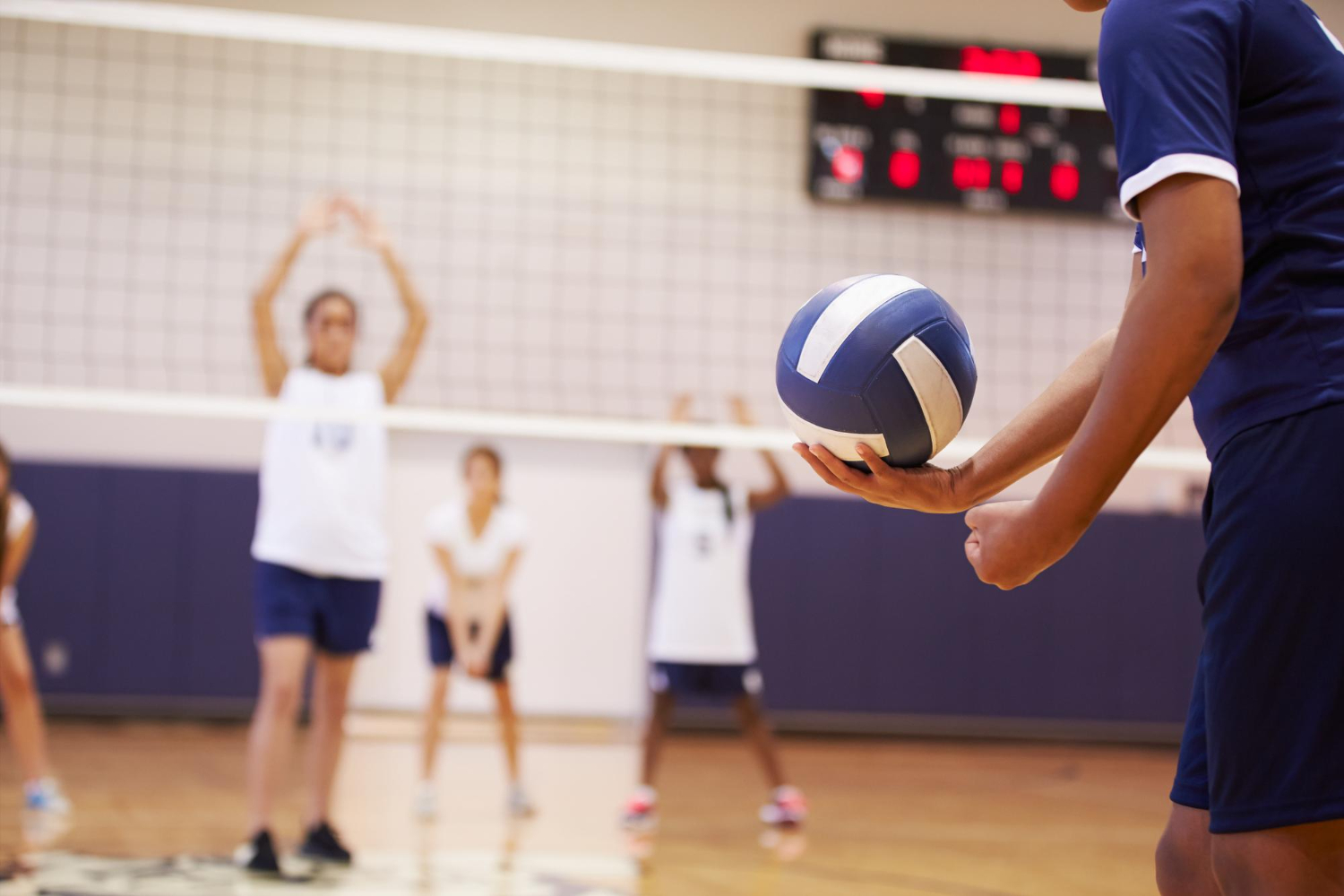Table of Contents
ToggleServing is one of the most important volleyball skills. A strong and accurate serve can put pressure on the opponent, set the tone for the rally, and even score points directly. Just like passing or spiking, serving improves with practice and the right technique. Volleyball serving drills are designed to help players develop consistency, accuracy, and power, whether they are beginners learning the basics or advanced players aiming for more control. With focused drills, players can build confidence in their serve and make it a real weapon during matches.
What is a Serve in Volleyball?
A serve in volleyball is the action that starts the game. One player stands behind the end line and hits the ball over the net to the opponent’s court. The goal is to serve the ball strongly enough to challenge the opposing team but accurately enough to land within the court. A good serve can force mistakes, limit the opponent’s attack, or even win a point directly, known as an “ace.”
Why is Serving Important in Volleyball?
Serving is more than just getting the ball over the net. It’s a tactical weapon. Here’s why volleyball serving drills matter:
- Starts Every Rally: Initiates play and immediately puts pressure on opponents.
- Direct Scoring Opportunity: A perfect serve can earn an ace without extended rallies.
- Disrupts Opponent’s Offense: Forces weak returns and interrupts passing patterns.
- Strategic Advantage: Serve to weaker passers or target open zones to gain control.
- Influences Momentum: A successful serve swings confidence and pace in your favor.
Want to level up your game? Our complete guide to volleyball drills is a must-read.
Core Principles of Effective Serving in Volleyball
To make your serve a real weapon, focus on these five core principles:
- Consistency: Develop a pre-serve routine to maintain focus and build muscle memory and reliability through repetition.
- Accuracy: Aim for specific zones where opponents struggle and adjust your placement based on court positioning and the game situation.
- Power: Combine proper technique with a strong core and leg drive. Vary your serves using overhand, jump, and float serves to add speed and unpredictability.
- Serving Strategy: Mix up serve types to keep opponents guessing. Target weak passers or empty court spaces to disrupt their formation.
- Mentality: Confidence, adaptability, and smart decision-making amplify effectiveness. Treat every serve as a tactical opportunity.
Volleyball Serving Drills
Serving is more than just putting the ball into play; it’s a chance to gain an advantage right from the start. For new players, developing a consistent serve builds confidence and helps them understand the rhythm of the game. The right drills make learning easier by breaking the skill into simple steps, improving control, and building accuracy over time.
Volleyball Beginner Serving Drills
Serving is one of the most important volleyball skills, and beginners should focus on building a solid foundation with simple yet effective serving drills in volleyball. These drills help players develop consistency, accuracy, and confidence in their serves. Beginners should focus on toss consistency and targeting. Advanced players can mix power, spin, and strategy.
-
Toss and Drop
- Purpose: This drill trains you to keep your toss steady, a key to every good serve.
- How it works: Stand near the service line, toss the ball just in front of your hitting shoulder, and let it fall. The ball should drop about an arm’s length in front of you.
-
Target Serving
- Purpose: Practising with targets builds accuracy and teaches you to serve to specific zones.
- How it works: Place cones or markers on the court and aim your serves at those spots.
-
Serving Challenge (Partner Drill)
- Purpose: Adding a game-like challenge makes practice fun while building consistency.
- How it works: Pair up with a teammate. One serves, the other catches. Aim for 10 clean serves in a row.
Advanced Volleyball Serving Drills
Once players master the basics, advanced serving drills help them refine accuracy, add power, and develop tactical variations that keep opponents on their toes. These drills are designed to sharpen precision, build consistency, and prepare players for real game pressure.
-
Serving Around the World
- Purpose: Builds accuracy and consistency by training players to hit different court areas with confidence.
- How it works: Divide the court into multiple zones and have players serve to each one in sequence.
-
Target Serving
- Purpose: Enhances precision and control, helping players develop the ability to serve with purpose.
- How it works: Place cones or markers on the court as targets and challenge players to serve directly to those spots.
-
Field Goal
- Purpose: Adds difficulty and sharpens serving accuracy under tighter conditions.
- How it works: Use antennas or markers to create smaller serving targets and gradually reduce their size as players improve.
-
Overhand Serve Technique Drills
- Purpose: Strengthens mechanics for more powerful and consistent overhand serves.
- How it works: Focus on arm swing, follow-through, and proper weight transfer during serves.
-
Jump Serve Drills
- Purpose: Emphasizes speed, spin, and explosive power, making serves harder to return.
- How it works: Practice the jump serve step by step, from approach to take off to contact.
-
Hybrid Serve
- Purpose: Creates a deceptive and versatile serve that keeps opponents guessing.
- How it works: Blend elements of topspin and float serve into one motion.
-
Big Point Drill
- Purpose: Prepares players mentally and physically to deliver under pressure.
- How it works: Simulate high-pressure, game-like scenarios where a serve could decide the outcome.
-
Serve and Set Drill
- Purpose: Trains players to transition quickly from serve to attack mode.
- How it works: Combine serving with setting drills, focusing on turning the serve into an offensive play.
-
Serve Receive Drills
- Purpose: Strengthens teamwork and serve receive skills, ensuring smoother play transitions.
- How it works: Drills like “Wave,” where players pass to a target while rotating positions.
-
Jump Float Serve
- Purpose: Produces a fast, unpredictable ball flight that’s tough to handle.
- How it works: Execute a jump serve but with the floating effect, reducing spin.
-
Topspin Serve
- Purpose: Increases serve velocity and creates a steep downward trajectory that challenges defenders.
- How it works: Apply strong topspin, causing the ball to dip sharply into the opponent’s court.
-
Floater Serve
- Purpose: Forces errors from receivers due to its unpredictable movement.
- How it works: Deliver a serve with little to no spin, making its path erratic.
Common Serving Mistakes to Avoid
When you’re learning how to serve, it’s very normal to mess up a few times, but knowing the usual volleyball serving mistakes can help you fix them faster:
- Inconsistent Toss: If your toss is all over the place, your serve will be too. Keep practising until your toss feels smooth and predictable.
- No Follow-Through: Don’t stop your arm right after hitting the ball; let it flow through. That extra follow-through gives your serve more power and control.
- Serving with an Open Hand: Hitting the ball with a loose or open hand makes it weak. Use a strong, flat hand (or a cupped one if that feels better) for a clean hit.
- Hitting Too Low: Striking the ball too close to the net usually ends with the ball stuck there. Aim to make contact high and slightly in front of your body.
- Not Aiming Anywhere: Just getting it over the net won’t cut it. Pick a spot, like a weak passer or an open zone, to challenge the other team.
Take your volleyball journey to the next level with our expert-designed programs and drills. We’re here to help you achieve your full potential!
FAQs
-
How often should I practice Volleyball serving drills?
Try to practice serving at least 3–4 times a week. Short, focused sessions are better than long, unfocused ones; it’s about quality, not just quantity.
-
What’s the easiest serve for beginners?
The underhand serve is the simplest to start with. It gives you better control and helps you build confidence before moving on to more advanced serves.
-
How do I add power to my serve?
Power doesn’t just come from your arm; use your legs and core to drive the motion, then snap your arm through for extra speed.
-
How do I avoid serving errors?
Keep your toss steady, don’t try to smash the ball too hard, and practise regularly so your motion feels natural and automatic.
-
Can serving alone win matches?
A strong serve is a big advantage, but volleyball is a team sport. You’ll need solid passing, setting, and defence to consistently win games.
-
What are the different types of volleyball serves?
The main ones are underhand, overhand, float, and jump serves. Each has its own style and can be effective in different situations.
-
How do I choose the right serving technique?
Start simple, underhand if you’re new, then gradually try overhand or float serves. As you improve, you can mix in jump serves for more speed and unpredictability.
-
How do I improve my serve accuracy in volleyball?
Focus on a consistent toss and practice aiming at specific spots on the court. Over time, your precision will improve.
-
How do I serve consistently under pressure?
Train like it’s game day, practice with teammates watching, add pressure scenarios, and use deep breaths to stay calm before serving.
-
What is a float serve, and why is it effective?
A float serve doesn’t spin much, so it wobbles unpredictably in the air. That makes it tricky for opponents to read and pass cleanly.
-
What muscles are most important for serving in volleyball?
Your core, legs, shoulders, and arms all work together to generate power, balance, and control during a serve.
-
Can Volleyball serving drills help me get more aces?
Definitely. Drills that target accuracy, placement, and speed increase your chances of hitting unreturnable serves.
-
How do I practice serving without a volleyball court?
Use a wall, focus on perfecting your toss, or do strength training to build the muscles that power your serve.
-
Should I focus more on power or accuracy when serving?
Accuracy should come first; hitting your target consistently matters more. Once you’ve got control, add power to make your serves tougher to return.
Key Takeaways:
- Serving is the most important skill in volleyball because it’s the only one you perform without interruption from opponents.
- Consistency first: Smooth toss and follow-through form the foundation.
- Accuracy over power: Aim for zones before adding strength.
- Avoid common mistakes: poor toss, weak contact, or lack of target.
- Volleyball serving drills build confidence for all levels, from beginners to advanced players.
Authors
-
Sarah Baker is a dedicated sports and fitness content specialist with a rich background in athletics. As a former high school volleyball player and track athlete, she understands the transformative power of sports in shaping character and fostering discipline. Sarah is passionate about inspiring youth worldwide to embrace sports, hone their skills, and achieve excellence both on and off the court. She continually expands her knowledge through ongoing education in sports performance and fitness, aiming to empower her audience with valuable insights. Currently, Sarah contributes her expertise to the content team at Valley Athletics, a premier sports facility in Fresno, California, dedicated to developing young athletes in volleyball, basketball, and pickleball.
View all posts -

Jonathan stands as a monumental figure in volleyball, boasting accolades such as National Champion, National Player of the Year, and being one of the select few, just thirteen, to achieve All-American status four times in NCAA volleyball history. His illustrious playing journey took flight at Pepperdine University, culminating in his 2005 NCAA Championship win, AVCA National Player of the Year and Newcomer of the Year titles.
View all posts



